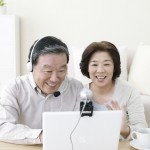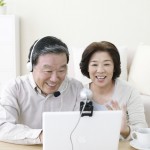 In our senior care experience, we have worked with many families to help determine ways their loved ones can stay safely and comfortably in their own homes. In our most recent blog series, we are covering some of the technologies and home care products to help seniors age in place (here is our first post, covering medication management and other home care technologies). Some additional categories of home health products include:
In our senior care experience, we have worked with many families to help determine ways their loved ones can stay safely and comfortably in their own homes. In our most recent blog series, we are covering some of the technologies and home care products to help seniors age in place (here is our first post, covering medication management and other home care technologies). Some additional categories of home health products include:
Durable Medical Equipment
There exists a wide variety of equipment for home safety, from shower chairs to specialty beds, mobility devices and more. Some items are covered by Medicare but rules are very specific for gaining coverage and how often items can be replaced. Medicare has a tool on their website to locate Medicare suppliers, for medical equipment, orthotics and more.
Home Modifications
Most seniors’ homes are not built with universal design principals, unless perhaps they have moved in to a retirement community. Thus, making modifications to the home can often be useful for additional safety and practicality. Minor modifications are often an important part of falls prevention. This begins with small changes such as removing throw rugs, adding non-stick appliques in the bath/shower, reoranizing storage to put items within reach, etc.
Other important modifications include adding proper grab bars in the bathroom, lighting in stairs and the path to the bathroom at night, and possibly adding ramps or removing curbs. If a home has a bath/shower combo, it may be wise to change this to a shower stall or change out (or cut) the tub so it has an entry “door”. Download our free falls prevention home safety checklist to identify potential changes needed in the home to prevent unnecessary falls.
Communications Tools
We have already covered home monitoring systems, which can be considered communications tools, especially those that send vital information to caregivers or doctors. However, there are a wide variety of communication tools that may enhance quality of life. Standard communication tools, from the basic mobile phone to computers with Skype/video calling and email capabilities as well as online support groups and communities can enhance socialization and access to information. A number of companies have developed communications tools geared specifically to seniors or individuals with vision or hearing impairments. Many technologies used by people every day are being adapted to health and care related needs, such as apps designed to track health or manage personal records.
A big category within communications technology is Electronic Medical Records or Personal Health Records. Aging Wisely’s blog contains a detailed review of these systems, including some important factors to analyze when considering setting up an electronic personal health record. The benefits of these systems are improving continuity of care via communicating accurate and timely information and assisting caregivers to better access and manage information. You may choose a system that helps your family members communicate updates and saves time for primary caregivers.
Senior Care Companies Using Technology to Provide Better, More Affordable Care
Within many eldercare companies, such technologies are helping improve customers’ experiences. For example, at EasyLiving, we invested in technology to enable our caregivers to access necessary information about clients, better manage scheduling and maximize our accountability to clients. Our personal client care plans are loaded in to our secure online system with tasks and key information communicated to any caregiver working with a client. Our caregivers check in and out of a client’s home via telephone, which immediately sends data to our system so we know about any problems quickly. Because our scheduling and billing is tied in with this, families and other responsible parties are assured of the accuracy of records.
Have a home care product or aging-in-place technology that you recommend or would like for us to review? Contact us.
Need immediate senior care help or caregiver advice? Call us any time at 727-448-0900.







